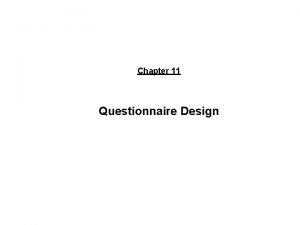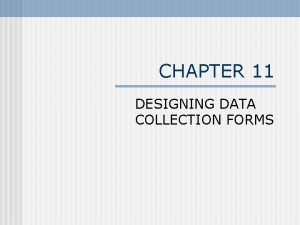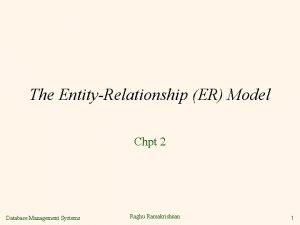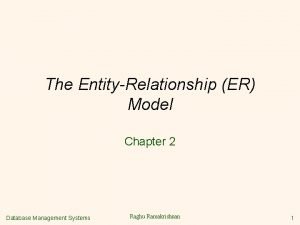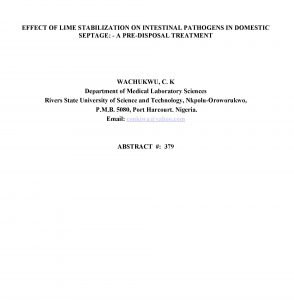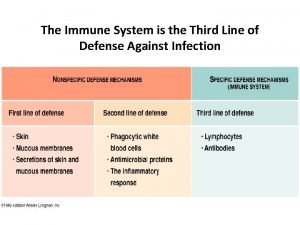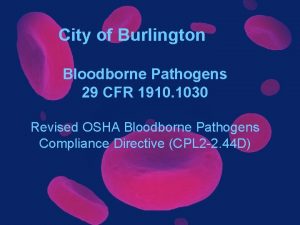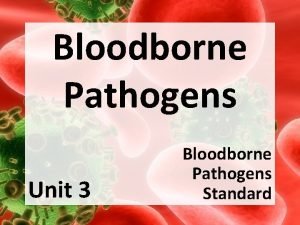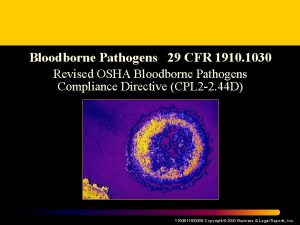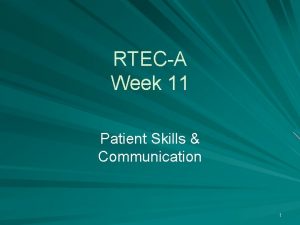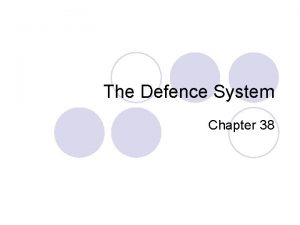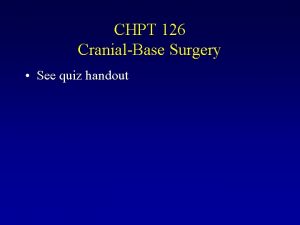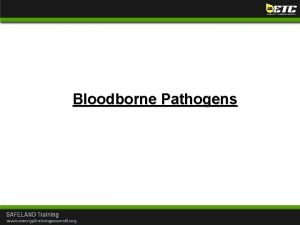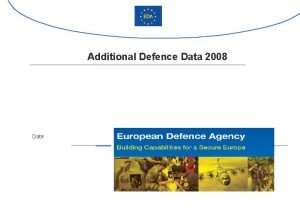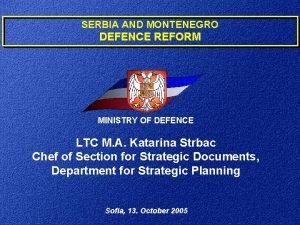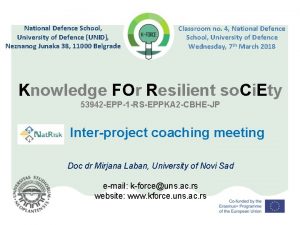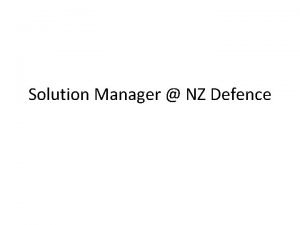Chpt 38 The Human Defence System Pathogens Pathogens














- Slides: 14

Chpt. 38: The Human Defence System

Pathogens: • Pathogens are disease causing organisms • The human body has 2 ways of defending against pathogens: 1. The GENRAL defence system 2. The SPECIFIC defence system

The General Defence System: • non-specific • acts as a barrier to pathogens entering the body Barrier Skin Reason It is a physical barrier Secretes enzymes from the sebaceous glands that kill bacteria. Mucous membrane Lines breathing, reproductive, urinary & digestive tracts, its sticky & traps pathogens before they enter the body Clotting If skin is broken blood clotting mechanism prevents entry of pathogens

Barrier Reason Lysozyme Enzyme found in sweat, tears, and saliva. Attacks and dissolves the cell walls of bacteria Cilia Tiny hairs lining the respiratory system. Beat and create a current which moves mucous back up respiratory system and into the stomach. Acid HCl acid in the stomach kills many pathogens Found in vagina produce lactic acid which prevents the growth of pathogens Beneficial Bacteria

The General Defence System: • destroys any pathogens that enter the body Mechanism Method Phagocytic WBC When cells are damaged by invading micro-organisms they release chemicals attracting WBCs (phagocytes) engulf and destroy invading micro-organisms Defence Proteins Complement is a set of 20 proteins found in blood plasma. Complement proteins are activated by infection Complement proteins are involved in a chain rxn which results in the bursting of viruses etc.

Mechanism Inflammation Method Infected cells release histamine this results in blood capillaries opening wider and becoming more porous. This causes – swelling, redness, heat, and pain as well as bringing more WBCs to the area Inflammation over the whole body – fever – this increased temperature interferes with reproduction in some micro-organisms


Note on Phagocytes: • Most phagocytes die after a few days • Macrophages – very large phagocytes which live a long time - some macrophages move around the body acting as scavengers for pathogens - some macrophages remain fixed in places such as lymph nodes and other lymphatic tissues – filter out and destroy pathogens present in lymph

White cell Germ “Eating” germ Phagocytosis by WBC

The Specific Defence System (Immune System): • This system is activated when pathogens get past the general defence system • This system attacks specific pathogens • Lymphocytes and monocytes are two types of WBC both formed in bone marrow • Organs of the immune system that store WBC’s called lymphocytes and monocytes include the lymphatic vessels, tonsils, spleen, lymph nodes

Monocytes: • develop into macrophages • macrophages recognise foreign molecules (antigens) present on surface of pathogens. • Macrophage digests pathogens and uses its antigens to stimulate the production of antibodies

Lymphocytes: • 2 types – B cells & T cells • fight infection in two different ways: 1. attack body cells that contain antigens on their surface 2. produce antibodies Germ (antigen) Antibody

Antigens: An antigen is a foreign molecule that causes antibody production Antigens are located on: • bacterial cell walls • viral coats • cancerous cells

Antibodies: An antibody is a protein produced by white blood cells in response to an antigen Each type of antibody is highly specific to a single antigen Antibodies inactivate antigens and allow them to be destroyed
 Questionnaire design process chpt 11
Questionnaire design process chpt 11 Questionnaire design process chpt 11
Questionnaire design process chpt 11 Chpt er
Chpt er Chpt er
Chpt er Major human pathogens
Major human pathogens Human pathogens and toxins act
Human pathogens and toxins act Pcda dts
Pcda dts I mef help desk
I mef help desk What are the immune systems 3 lines of defense
What are the immune systems 3 lines of defense Defence travel system
Defence travel system Deqms
Deqms Bloodborne pathogens quiz answers
Bloodborne pathogens quiz answers Unit 3 bloodborne pathogens standard
Unit 3 bloodborne pathogens standard Bloodborne pathogens quiz answers
Bloodborne pathogens quiz answers Blood borne pathogens
Blood borne pathogens
